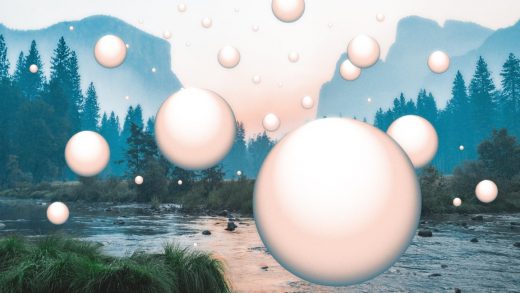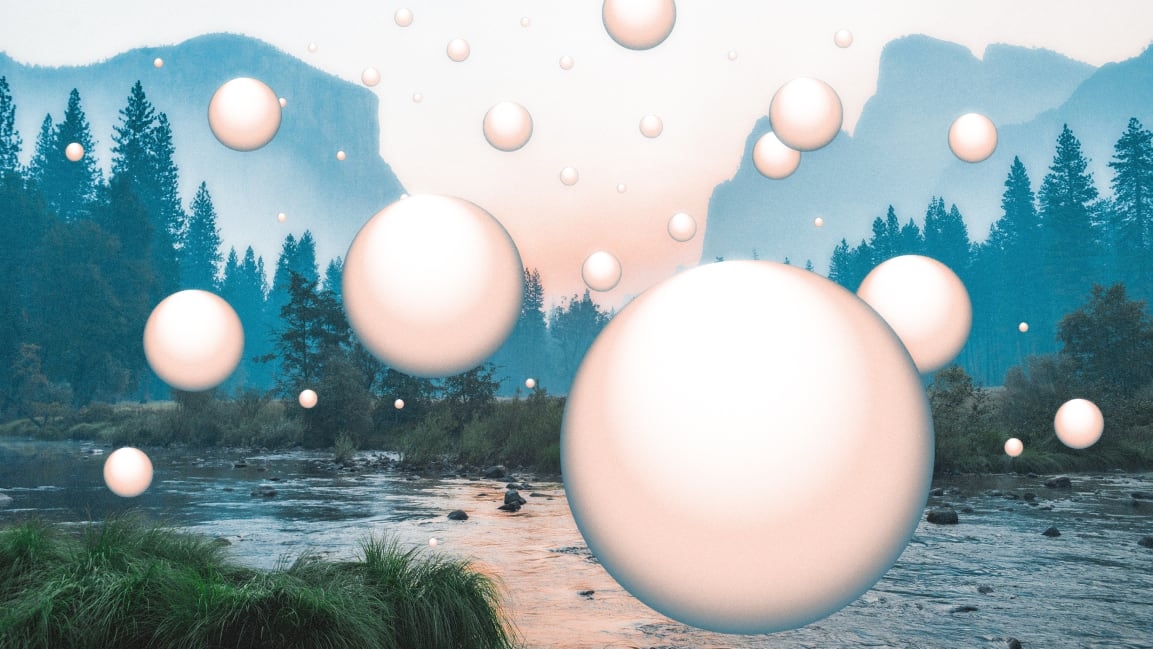Rain and wind bring 1,000 tons of microplastics to U.S. protected lands every year
When people talk about keeping our public lands free from plastic pollution, most people would picture an empty soda bottle, littered onto a trail. But while that kind of plastic might be easier to spot (and clean up), those same lands are being inundated by another kind of trash: microplastic—pieces 5 millimeters or less—that are so small they can be blown by the wind or evaporated into clouds and deposited by rainstorms. Though they’re tiny, together they add up to tons and tons of plastic ending up in protected areas.
The discovery comes from a new study conducted at Utah State University and published in Science, in which professor Janice Brahney and her team analyzed samples collected over 14 months from 11 national parks and wilderness areas. Brahney, whose scientific work has been focused on how the atmosphere affects what’s in dust and soils in isolated ecosystems, didn’t actually intend to research microplastics. When her team started this effort, the goal was to understand how the atmosphere deposited nutrients onto remote soils.
“To be totally honest, I didn’t expect plastic in my samples. That was a surprise,” she says. “Because I’m really interested in what dusts are composed of, I started looking at them under the microscope to see how much was mineral matter and how much was organic matter . . . but what I saw, in addition to minerals and organics, were brightly colored pieces of plastic.” As soon as her team realized the quantity of microplastics they were seeing in their samples, she says, they refocused their research efforts.
Since learning more about plastics, Brahney sees that she should have anticipated finding microplastics even on remote, protected lands. Still, the total amount of plastic is startling. Based on multiple samples from those 11 sites in conservation areas, the researchers calculated that more than 1,000 tons of microplastics rain down on these lands annually. Those protected lands in the western U.S. account for only 6% of the total land cover nationwide
“It’s definitely an extrapolation, and we need a lot more data and information,” Brahney says. “But one of the benefits in making these estimates in remote locations is that they’re not influenced by very local activity. . . . That’s why we felt we could extrapolate from one point sample in the park to the entire park.”
The biggest category of these microplastics was fibers related to clothing. Samples included polyester, nylon, polypropylene, and PTFE, which is used in technical wear such as waterproof jackets. Other fibers likely came from industrial origins, such as carpeting. Because plastic breaks up into such tiny pieces, it was harder for the researchers to identify what the other plastic particles originally were, but Brahney says they identified a lot of common plastics such as polyethylene and polystyrene. About 30% of the particles were multicolored microbeads, though not the kind used in cosmetics. Instead, these probably came from paint and industrial coatings that are applied through aerosol sprays.
Those plastics are borne into the parks by both rain and wind. Researchers looked at spatial data about how air masses moved, along with population density data, and found that the plastics that rained down seemed to originate more from nearby sources: The amount was heavily influenced by nearby cities and populations. “Then we were able to say, okay, on this date where we saw a really high deposition rate, the air mass passed through two major cities, or interacted with this many people,” Brahney says. “[This implies] that cities and people can be the primary source of plastics to the atmosphere.”
But most of the plastic—75% of the mass— was windborne, and plastics that come down from the air this way tend to come from sources farther away, rather than nearby, though it’s not exactly clear what those sources are. These plastics can come in with dust, get picked up by storms, and generally swirl around high up in our atmosphere until they come into contact with mountains or otherwise drop from the air.
“What that’s telling us is that plastics can spiral through the Earth’s systems,” Brahney says. “Plastics can be emitted into the atmosphere and deposited in one location, and then later picked up again and moved through the atmosphere and deposited in a second location . . . and so on and so on.” What we don’t yet know, though, is the full extent of this, including how many plastics are in the atmosphere and where the hotspots of both plastic emission and deposition are.
That even our protected lands are becoming littered with microplastics shows that we truly can’t protect any of our environments from pollution without addressing our plastic problem head-on. Brahney doesn’t have the solution, but she hopes her work inspires other researchers to learn more about how plastic moves through our atmosphere; find out the effects these microplastics have on our ecosystems, human health, and wildlife health; and develop technologies to limit plastic emissions.
“This is a big problem, bigger than any one person and any one nation. As an Earth community, we’ve been producing compounds that don’t decompose—they just degrade into finer and finer pieces,” she says. “We wanted to create things that were very resilient, and we did, and now it’s accumulating in every nook and cranny of the planet, and we’re going to have to deal with that for some time to come.”
(18)



